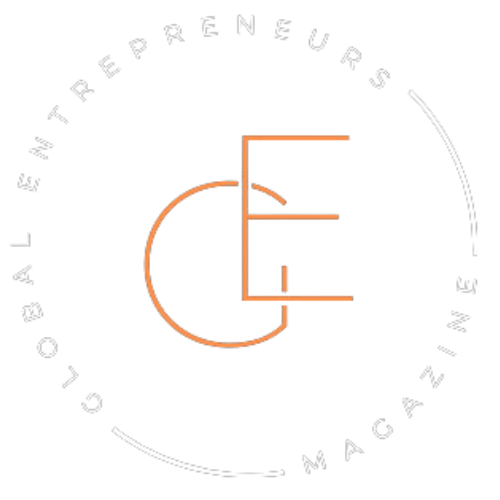She didn’t have an MBA. She didn’t have investors lined up. What she did have was a garage full of unsold product, a toddler on her hip, and a voice in her head that kept repeating, “You’re not the one they bet on.” That’s how the story usually starts.
When people talk about “market disruption,” they often picture a whiteboard, a boardroom, and someone holding a clicker in front of a slide deck. But the kind of disruption we’re talking about doesn’t look like that. It looks like a single mom creating an app during nap time. It looks like a side hustle turned full-time after getting laid off. It looks like women who’ve been underestimated for so long, they stopped waiting for permission and started building their own tables.
This isn’t about perfect pitches or polished resumes. It’s about instinct. It’s about working around locked doors until you forget they were ever supposed to be opened for you. It’s about how some of the most overlooked women are creating businesses that not only challenge the rules—but rewrite them completely.
So let’s talk about the ones who were counted out—and decided that was their cue to take over.
Starting from the margins, not the mainstream
Most of the time, it doesn’t start with a seed round or a LinkedIn announcement. It starts with frustration. With noticing a gap and realizing no one else seems interested in filling it. That’s where many women founders come in—not through the front doors of Silicon Valley, but through side entries carved out with grit and unpaid hours.
Take Jamila. She launched her skincare brand from her kitchen after noticing how few products were made for women with sensitive, melanated skin. Labs wouldn’t take her seriously. Distributors told her to “appeal to a broader market.” Instead of scaling back her vision, she began selling locally, hand-labeling each jar, and listening closely to what her customers actually needed.
The story didn’t start with capital. It started with clarity.
Working from the margins forces a kind of focus that cushy conditions can’t. You learn how to stretch resources, test ideas quickly, and get real-time feedback from the people you serve—not some abstract “target audience.” There’s no buffer between you and the market. That closeness? It sharpens your instincts. It makes your offer real, not theoretical.
And that’s what sets these entrepreneurs apart. They didn’t wait for the market to include them. They created new demand where others saw none.
Turning rejection into a sharp business instinct
Rejection stings. But for a lot of women entrepreneurs, it also strips away any illusions fast. When doors close, they stop knocking. Not because they’ve given up—but because they’ve figured out how to build their own.
Maya pitched her tech platform to twelve investors. Eleven passed. The twelfth said he didn’t “get” the product but wished her luck. So she stopped pitching. She used what was left of her savings to build a scrappy MVP, launched it to a Facebook group of 200 women, and watched her inbox flood within the hour.
She didn’t take rejection personally. She took it as data.
When you’re shut out, you learn how to read people. You get better at spotting who’s serious, who’s stalling, and who’s only showing up to sound supportive. That kind of clarity becomes a strategy. You waste less time. You build smarter. And your gut becomes the filter no advisor can match.
Turns out, the no’s can teach you exactly what kind of business you need to run—one that answers to your users, not to boardrooms.
Designing for those who’ve been overlooked

Some of the most disruptive products didn’t come from market analysis. They came from lived experience. When you’ve spent years being ignored as a customer, you start to notice the blind spots. And for women founders, those blind spots often become the sweet spot.
Claire wasn’t trying to start a company. She just wanted a breast pump that didn’t make her feel like she was being punished for having a job. She ended up designing one herself—something quiet, wearable, and discreet. At first, she sold them through a basic Shopify store. Within months, her product was being passed around in group chats and new mom forums like a secret weapon.
She didn’t need to manufacture demand. It was already there—just waiting for someone to care enough to build for it.
These women don’t chase trends. They respond to what’s missing. They create for communities that are used to settling. That’s why their products hit differently. They don’t just meet a need. They feel personal. Thoughtful. Relieving, even.
When you’ve spent your whole life being left out of the design process, there’s something powerful about rewriting what “normal” looks like.
Creating new rules when the old ones didn’t apply
The playbook wasn’t written with them in mind, so they stopped pretending it was. Instead of squeezing into broken systems, these founders built new ones—ones that made more sense, moved faster, and left space for actual human connection.
Tasha didn’t come from retail. She didn’t have a background in logistics or supply chain. What she had was a tiny online following and a handmade product people kept asking for. Instead of chasing wholesale deals, she built her business around pre-orders and community drops. No middlemen. No guesswork. Just a rhythm that let her listen, create, and deliver without drowning in inventory or debt.
She didn’t need to follow the rules to grow. She needed to break them quietly.
That’s the thing about working outside the system. You start with nothing—no blueprint, no gatekeepers, no “right” way to do things. So you invent your own pace. You learn how to ask your audience what they want instead of guessing. You stay scrappy, not because it’s trendy, but because it’s real.
And sometimes that freedom? That’s the advantage the big players can’t buy.
From underestimated to category-defining
They weren’t seen as threats. That’s how they slipped through.
While everyone was busy betting on the usual suspects, these women were building something different—something quieter, more personal, but impossible to ignore once it hit the market. The kind of product or platform that doesn’t just sell—it sets a new standard.
Rachel started with a niche haircare line for curls that mainstream brands never really got right. She didn’t aim to be the biggest. She just wanted her customers to feel seen. But as orders poured in and reviews turned emotional, she realized this wasn’t just a business—it was a correction. A way of saying, “This should’ve existed already.”
That’s how movements start. Not with flash. With precision.
The irony? The same reasons they were dismissed—too niche, too emotional, too different—became the exact reasons they broke through. When your idea comes from a place people recognize in themselves, it stops being “small.” It starts being the new normal.
Conclusion
Remember the woman from the beginning—the one with a toddler on her hip and a garage full of product? She’s not in the garage anymore. Her company ships internationally now. She hires other mothers who need flexible hours. And no, she never did get that investor callback. She stopped waiting a long time ago.
That’s the thread running through these stories. It’s not about breaking into power. It’s about building it differently. Quietly. From the ground up. From a place that doesn’t ask for approval.
Disruption doesn’t always come with fanfare. Sometimes it looks like a woman tired of hearing no, choosing to answer herself instead.




